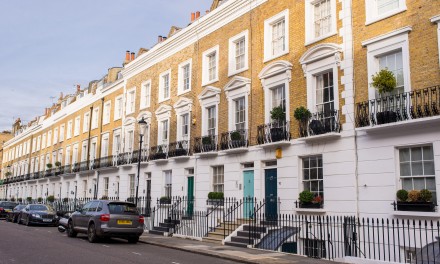Monaco is experiencing a boom in luxury new build properties. But can supply meet demand?
For a city state that was predominantly built during the 1950s, the new projects are re-invigorating Monaco and exciting buyers.
The developments include One Monte Carlo, Le Stella and Tour Odeon, the first high rise to be built in the city state since the 1980s.
They are adding a new kind of luxury and contemporary living to the city state's ageing skyline.
In 2018 new property sales totalled some 11 per cent of total transactions.
This is a record for this land-constrained area where the total number of transactions for the year was just 456.
Monaco's new generation
The rise in demand for new build property reflects the evolution of Monaco.
Monaco continues to have global appeal for the world’s wealthiest residents due to its strong economy and tax benefits.
However, a new generation of business people and entrepreneurs moving to Monaco today seek state of the art, luxury homes to rival those found in Mayfair, Hong Kong or Los Angeles.
Ageing glamour
“Monaco is a key wealth hub globally, and always will be. But many of the buildings in central Monaco date back to the 1950s,” notes Edward de Mallet Morgan, partner in the international super prime sales team at Knight Frank.
“With ongoing political uncertainty throughout Europe and as the world’s wealthiest look for more stable economies to place their money, the demand for super-prime luxury residential is stronger than ever.
“Monaco is evolving into a cosmopolitan and metropolitan hub that can compete on a global scale,” he said.
Laurent Locchi of Hammer Draff, an affiliate of Christie’s International Real Estate in Monaco, agrees.
He thinks Monaco's new buildings are reaching the expectations of the chic clientele who are used to luxury amenities.
“The best example is One Monte Carlo. It offers services such as valet parking, 24h concierge service and access to one of the finest Spa, Les Thermes Marins, as well as the possibility of room service,” he said.
Gary Beauchamp, of Beauchamp Estates, notes that the drive for new builds follows work by the government to redevelop the centre of Monaco itself. It is also reclaiming land from the sea.
Eye-catching developments
The Le Stella project in the Condamine district is comprised of a series of high-rise villas and residential blocks.
The building takes the shape of innovative and bold concrete waves that wrap around the complex.
It includes a 24/7 concierge service, sauna and fitness areas, as well as swimming pool and indoor cinema.
Arguably one of the first developments that was able to offer such services in a residential capacity was the iconic Tour Odean development, completed in 2015.
The project is one of the Principality’s highest buildings, reaching some 170 metres into the sky. It houses more than 60 high end villas and apartments measuring between 215 and 3,000 sq metres.
The development set a new trend in Monaco.
Max Dekkers, managing director Monaco at Redd Real Estate, said: “Before the Tour Odeon tower was built, very few to no serviced apartments offered the combination of residential living with in-house restaurant and room service, fitness and spa centre, concierge and chauffer services, 24 hour security etc.”
Tour Odeon also saw very little competition when it was launched. Unsurprisingly, the units sold well at record prices comfortably exceeding the €44,000 per sq metre average, with a five-floor penthouse going for considerably more.
A new collection of apartments were released for sale with prices ranging from £8.2m to over £90m.
But can supply keep up with demand?
However there are very strict limits as to where you can build and what you can build in Monaco. Dekkers notes that large scale new build residential projects like Tour Odeon take time to complete.
Thus the gap between supply and demand, particularly when it comes to new build properties, is likely to widen.
Knight Frank’s de Mallet Morgan agrees.
“The demand for luxury residential property is only strengthening,” he said.
“Supply will struggle to keep up, particularly with many of the current developments underway or planned not available for occupation immediately.”
This article was originally published in the Mayfair Times.
For similar stories, visit the Property section of our website.
You may like to read about 47 Grosvenor Square in Onassis Mayfair home for sale.
Or find out about Buckingham Green, a luxury development in Victoria in Address to impress.
Discover a luxury block going up in Battersea in New View of Battersea.













